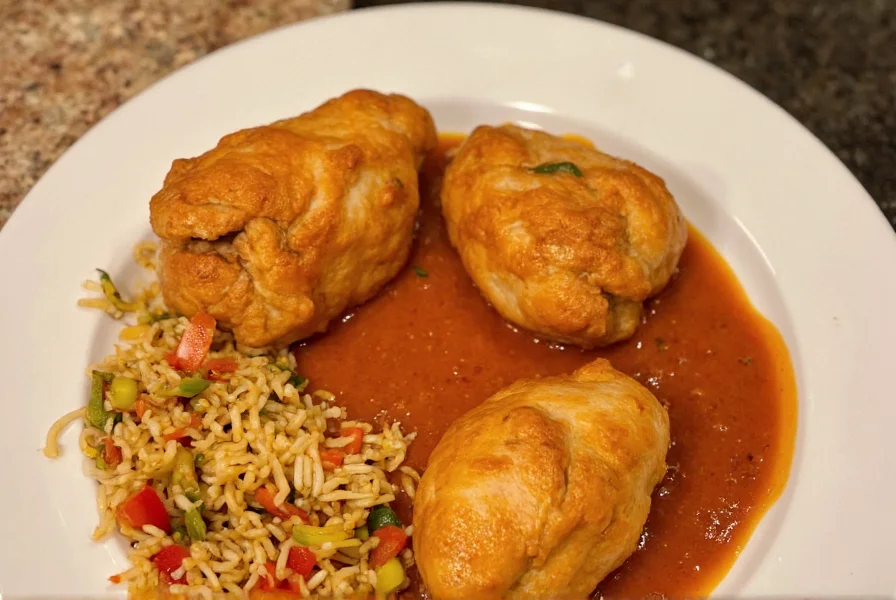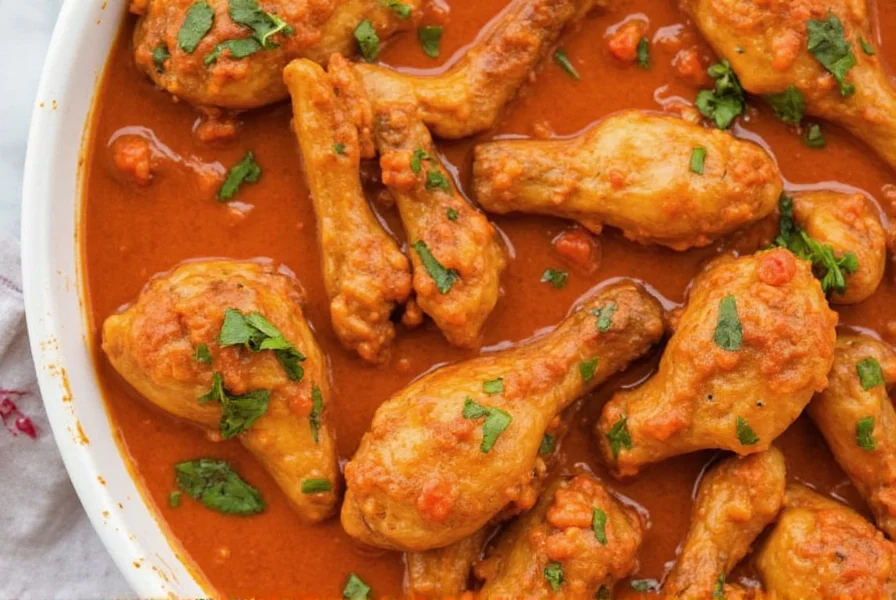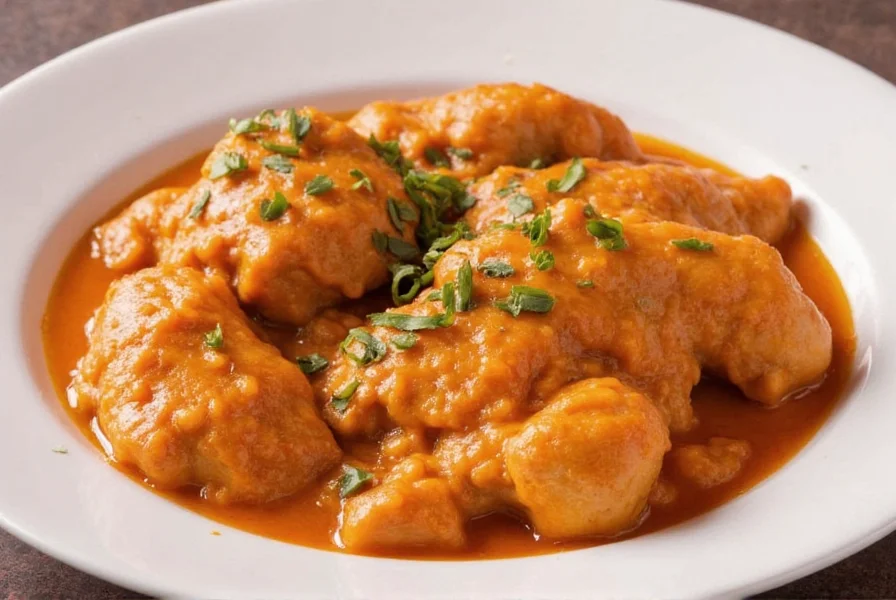When you're searching for the perfect chicken paprika recipe, you're likely looking for more than just ingredients—you want to understand the cultural roots, master the technique, and avoid common pitfalls that can turn this beloved Hungarian comfort food into a disappointing meal. This comprehensive guide delivers exactly that, with tested methods that honor the dish's heritage while adapting for modern kitchens.
The Cultural Heritage of Chicken Paprika
Chicken paprika (csirkepaprikás in Hungarian) originated in the 19th century as Hungarian cooks began incorporating paprika—a spice brought by the Turks—into traditional stews. Unlike many international adaptations, authentic Hungarian chicken paprika features a smooth, velvety sauce without tomatoes or heavy cream, relying instead on the natural sweetness of onions and the distinctive flavor of quality paprika.
Hungarian cuisine recognizes three main paprika varieties essential for authentic preparation:
| Paprika Type | Heat Level | Best Use in Chicken Paprika |
|---|---|---|
| Sweet (Édesnömör) | Mild | Primary ingredient for traditional flavor |
| Hot (Erős) | Spicy | Small amounts for heat variation |
| Special Quality (Különleges) | Mild | Most aromatic for premium results |
Mastering the Authentic Chicken Paprika Recipe
The secret to exceptional chicken paprika lies in the preparation technique, not just the ingredients. Follow these professional steps for restaurant-quality results at home.
Essential Ingredients Checklist
For the most authentic Hungarian chicken paprika, gather these components:
- 1.5-2 lbs bone-in, skin-on chicken thighs (traditional cut)
- 3 tbsp high-quality Hungarian sweet paprika
- 2 large yellow onions, finely chopped
- 2 tbsp lard or vegetable oil (traditional fat)
- 1 green bell pepper, sliced (optional but traditional)
- 1 cup chicken broth
- 2 tbsp sour cream (for finishing)
- Salt and pepper to taste

Step-by-Step Cooking Method
- Prepare the roux: In a heavy-bottomed pot, cook chopped onions in lard over medium-low heat until golden (15-20 minutes). Avoid browning.
- Add paprika carefully: Remove pot from heat, stir in paprika, then return to low heat. Cooking paprika directly over heat burns it—this critical step preserves flavor.
- Brown the chicken: Add chicken pieces skin-side down, searing until golden (5-7 minutes per side).
- Simmer to perfection: Add broth, cover, and simmer on lowest heat for 35-45 minutes until chicken is tender.
- Finish with sour cream: Remove from heat, stir in sour cream, and let sit 5 minutes before serving.
Avoiding Common Chicken Paprika Mistakes
Even experienced cooks make these errors when preparing traditional Hungarian chicken paprika recipe:
- Burning the paprika: Always mix paprika with cooled fat—direct heat destroys its delicate flavor compounds
- Using the wrong cut: Boneless chicken breast dries out; traditional recipes use bone-in thighs for moisture
- Adding tomatoes: Authentic versions contain no tomatoes—this is a common American adaptation
- Over-thickening: The sauce should coat the back of a spoon, not be gravy-thick
- Skipping the resting time: Letting the dish sit 10 minutes after cooking allows flavors to meld
Serving Authentic Chicken Paprika
In Hungary, chicken paprika is traditionally served with:
- Nokedli: Hungarian egg dumplings (similar to German spaetzle)
- Egg noodles: Wide, flat noodles that soak up the sauce
- Side salad: Simple cucumber salad with vinegar and dill
For the best chicken paprika experience, serve immediately while hot. The sauce continues to develop flavor as it sits, making leftovers even more delicious the next day.

Variations for Different Dietary Needs
While purists might frown, these adaptations maintain the essence of chicken paprika without compromising flavor:
- Dairy-free: Substitute sour cream with cashew cream or omit entirely
- Gluten-free: Traditional chicken paprika is naturally gluten-free (verify broth ingredients)
- Vegetarian: Replace chicken with mushrooms and potatoes for 'gomba paprikás'
- Spicy version: Add 1 tsp hot paprika or a pinch of cayenne for 'erős' (strong) variation
Storing and Reheating Tips
Chicken paprika tastes even better the next day as flavors continue to develop. For best results:
- Store in airtight container for up to 3 days
- Reheat gently on stove (not microwave) to preserve texture
- Add small splash of broth if sauce has thickened too much
- Stir in fresh sour cream after reheating for best flavor
Frequently Asked Questions
What's the difference between chicken paprikash and chicken paprika?
Chicken paprikash (American spelling) typically includes sour cream throughout cooking, while authentic Hungarian chicken paprika adds sour cream only at the end. Paprikash often contains tomatoes, which aren't in traditional Hungarian versions.
Can I use smoked paprika for chicken paprika?
Traditional Hungarian chicken paprika uses sweet, non-smoked paprika. Smoked paprika creates a different flavor profile. For authenticity, use Hungarian sweet paprika, though a small amount of smoked paprika (1/4 tsp) can add complexity to modern interpretations.
Why does my chicken paprika taste bitter?
Bitterness usually comes from burned paprika. Always remove the pot from heat before adding paprika, stir it into the cooled fat, then return to low heat. Never cook paprika directly over high heat, as it burns at temperatures above 175°F (80°C).
What wine pairs well with chicken paprika?
Traditional Hungarian white wines like Furmint or Olaszrizling complement chicken paprika's richness. For red wine lovers, a light-bodied Kékfrankos works well. Avoid oaky wines that can clash with paprika's delicate flavor.
How can I make chicken paprika thicker without altering flavor?
The traditional thickener is 'rántás'—a mixture of 1 egg yolk and 2 tbsp sour cream stirred into the sauce off-heat. Alternatively, simmer uncovered for 5-10 minutes to reduce, or add a small amount of nokedli dumplings which release starch as they cook.











 浙公网安备
33010002000092号
浙公网安备
33010002000092号 浙B2-20120091-4
浙B2-20120091-4